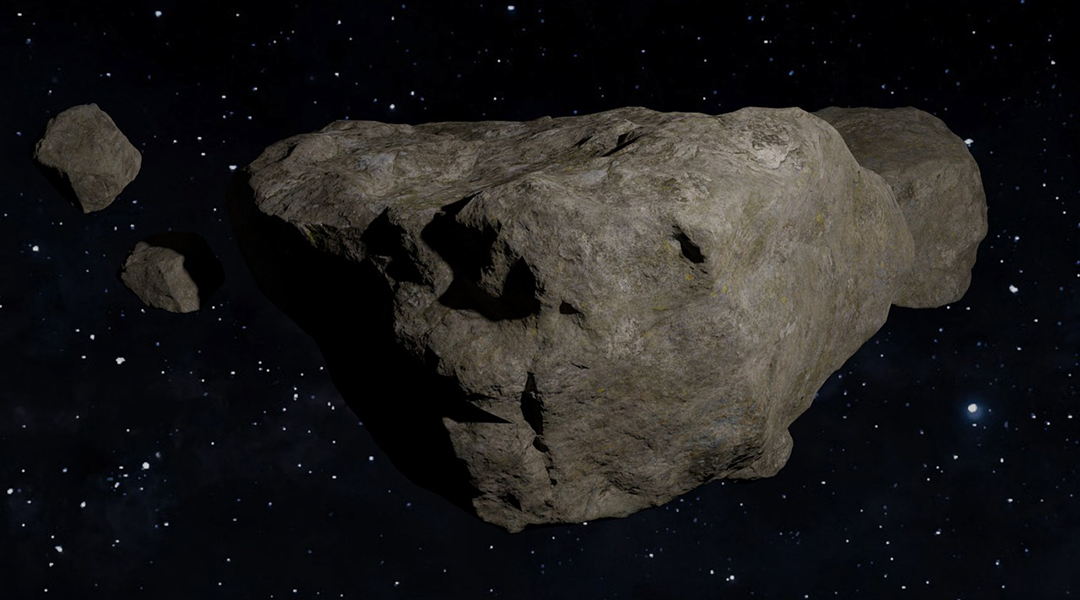Data gathered by the James Webb Space Telescope (JWST) has unveiled new insights into the surface composition of the asteroid Psyche, which orbits the Sun between Mars and Jupiter, revealing that it is much more complex than previously thought.
Scientists found that it contains molecules containing hydroxyl groups (OH–), whose presence may be an indicator of water-related chemistry. This discovery could enhance our knowledge of our solar system’s evolution and the distribution of water within it, which is crucial for understanding potential origins of life.
Psyche is a metallic (M-class) asteroid about 200 km across, making it one of the largest bodies in our solar system’s main asteroid belt — the vast toroid-shaped region of space located between the orbits of Mars and Jupiter.
M-class asteroids are thought to be the cores of planets that never fully formed (also called planetesimals) due to some catastrophic external impact, such as a collision with another asteroid. This makes these asteroids invaluable targets for studying planetary formation, as they provide a rare glimpse into what lies deep within planets, including Earth, whose core remains inaccessible to direct observation.
“Our understanding of solar system evolution is closely tied to interpretations of asteroid composition, particularly the M-class asteroids that contain higher concentrations of metal,” said Stephanie Jarmak, project scientist for Planetary Science NASA Astrophysics Data System and the lead author of the study, in a press release.
“These asteroids were initially thought to be the exposed cores of […] planetesimals, a hypothesis based on their spectral similarity to iron meteorites,” she continued.
However, there’s more to Psyche’s story.
Challenging earlier assumptions
By analyzing its gravitational influence on nearby celestial bodies, scientists determined that Psyche’s average density is less than 4 g per cubic centimeter. This density is unexpectedly low for an asteroid thought to be primarily metallic, raising questions about its true origin and composition.
To better understand Psyche’s makeup, a team led by the Southwest Research Institute used observations from JWST’s Near Infrared Spectrograph (NIRSpec) and Mid Infrared Instrument (MIRI). Their findings, published in the Planetary Science Journal, revealed significant infrared absorption at wavelengths around 3 μm on Psyche’s surface, which is typical of hydroxyls.
This suggests that Psyche’s surface, and potentially its interior, is not entirely metallic, challenging the earlier assumption that it represents an unaltered planetary core.
The presence of hydroxyls on Psyche’s surface could have either exogenous (external) or endogenous (internal) origins. Exogenous hydration might result from exposure to the solar wind — charged particles streaming from the Sun — or from impacts with other asteroids.
This possibility suggests that M-class asteroids like Psyche might have a more complex geological history than previously thought. However, the idea of an endogenous origin is even more intriguing.
“Asteroids are leftovers from the planetary formation process, so their compositions vary depending on where they formed in the solar nebula,” said Anicia Arredondo of Southwest Research Institute, and another author of the study.
“Hydration that is endogenous could suggest that Psyche is not the remnant core of a protoplanet. Instead, it could suggest that Psyche originated beyond the ‘snow line,’ the minimum distance from the sun where protoplanetary disk temperatures are low enough for volatile compounds to condense into solids, before migrating to the outer main belt.”
What does water on Psyche mean for future experiments?
If Psyche’s hydration is indeed endogenous, it could mean that other M-class asteroids share this characteristic, potentially reshaping our understanding of their origins and the evolution of the solar system.
Even if the hydroxyls are of exogenous origin, this discovery would indicate that water distribution in the solar system is more complex than previously thought. Since water is essential for life, understanding its distribution is crucial for exploring how life might arise both in our solar system and beyond.
These questions might be answered with future, more detailed observations or by the Psyche spacecraft, which launched in October 2023 and is expected to reach the asteroid in 2029. This mission could provide critical answers about Psyche’s structure, composition, and origins, offering new insights into the history of our solar system.
Reference: Stephanie G. Jarmak et al, Estimate of water and hydroxyl abundance on asteroid (16) Psyche from JWST data, The Planetary Science Journal (2024). DOI: 10.3847/PSJ/ad66b9
Feature image credit: BENG-ART on Pixabay

















